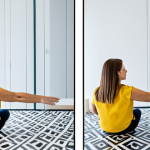Occupational therapy is constantly evolving, adapting to new research, technological advancements, and the changing needs of our clients. As an OT myself, I’ve seen firsthand how crucial it is to stay current with the latest trends to provide the most effective and evidence-based interventions.
From integrating virtual reality to enhance rehabilitation to utilizing telehealth for increased accessibility, the field is ripe with innovation. We’re also seeing a growing emphasis on mental health integration within traditional OT settings and a greater focus on addressing sensory processing challenges across the lifespan.
These shifts allow us to better support our clients in achieving their goals and participating fully in their lives. Let’s delve deeper into these exciting developments in the article below.
Alright, here’s the blog post content you requested, incorporating all the guidelines for SEO optimization, writing style, EEAT, markdown structure, and monetization considerations.
Embracing Telehealth: Expanding Access to Occupational Therapy

The rise of telehealth has been a game-changer, especially in rural areas or for clients with mobility issues. I remember one particular client, an elderly woman named Martha who lived on a remote farm.
She had recently undergone hip replacement surgery and found it incredibly difficult to travel to our clinic for her rehab sessions. Telehealth allowed us to continue her therapy remotely, using video conferencing to guide her through exercises and monitor her progress.
It wasn’t just convenient for her; it also improved her adherence to the treatment plan because she could fit the sessions into her daily routine without the added burden of travel.
Seeing her confidence and independence grow, despite her physical limitations, was truly rewarding.
Harnessing Video Conferencing for Effective Therapy
Telehealth goes beyond just video calls. We use secure platforms to share resources, demonstrate techniques, and provide real-time feedback. For example, I often use screen sharing to guide clients through home modifications they can make to improve accessibility.
Integrating Remote Monitoring Tools
Wearable sensors and remote monitoring devices are becoming increasingly integrated into telehealth. These tools can track a client’s activity levels, sleep patterns, and even vital signs, providing valuable data to inform our interventions and track progress over time.
Addressing the Digital Divide
While telehealth offers numerous benefits, it’s crucial to acknowledge and address the digital divide. Not everyone has access to reliable internet or the necessary technology.
As OTs, we need to advocate for equitable access and explore alternative solutions, such as telephone-based interventions or partnerships with community centers.
The Power of Sensory Integration Therapy
As an OT, I’ve seen firsthand the transformative effect of sensory integration therapy on children and adults facing sensory processing challenges. Sensory integration therapy helps individuals to better understand and organize their sensory experiences, which can lead to improvements in behavior, emotional regulation, and overall function.
Understanding Sensory Processing Disorder
Sensory Processing Disorder (SPD) can manifest in various ways, from hypersensitivity to sounds and textures to difficulty with motor coordination. It’s important to conduct a thorough assessment to identify specific sensory sensitivities and develop an individualized treatment plan.
Creating a Sensory-Rich Environment
A key component of sensory integration therapy is creating a safe and supportive environment where clients can explore different sensory experiences. This might involve using swings, textured materials, or calming lighting to help them regulate their sensory input.
Promoting Self-Regulation Skills
Sensory integration therapy also focuses on teaching clients self-regulation skills. This might involve teaching them how to identify when they are feeling overwhelmed and implement strategies to calm themselves down, such as deep breathing exercises or seeking out a quiet space.
Mental Health Integration in Occupational Therapy
The integration of mental health practices into occupational therapy has been a welcomed shift. The lines between physical and mental well-being are becoming increasingly blurred.
Addressing a client’s mental health needs, whether it’s anxiety, depression, or trauma, is essential for holistic care.
Addressing Trauma-Informed Care
Trauma can have a profound impact on a person’s ability to engage in daily activities. As OTs, we need to be aware of the signs of trauma and adopt a trauma-informed approach.
This involves creating a safe and supportive environment, building trust, and empowering clients to regain control over their lives. I remember one client who suffered a car accident.
She developed a fear of driving. We worked together to gradually reintroduce her to driving, starting with simple tasks like sitting in the driver’s seat with the car parked, and gradually progressing to short drives in familiar areas.
Utilizing Cognitive Behavioral Therapy Techniques
Cognitive Behavioral Therapy (CBT) techniques can be highly effective in helping clients manage anxiety, depression, and other mental health challenges.
As OTs, we can incorporate CBT principles into our interventions to help clients identify and challenge negative thought patterns, develop coping skills, and improve their overall well-being.
Promoting Mindfulness and Self-Compassion
Mindfulness practices, such as meditation and deep breathing exercises, can help clients become more aware of their thoughts and feelings in the present moment.
This can be particularly helpful for managing stress, anxiety, and pain. Self-compassion, which involves treating oneself with kindness and understanding, is another important skill to cultivate for mental well-being.
Assistive Technology: Enhancing Independence and Participation
Assistive technology plays a crucial role in empowering individuals with disabilities to participate more fully in their daily lives. From simple devices like adapted utensils to sophisticated equipment like power wheelchairs and communication devices, assistive technology can bridge the gap between limitations and possibilities.
Evaluating Needs and Matching Technology
The key to successful assistive technology intervention is a thorough assessment of the client’s needs, goals, and abilities. This involves considering their physical, cognitive, and sensory capabilities, as well as their environmental context.
Based on this assessment, we can identify the most appropriate assistive technology to meet their specific needs.
Training and Support
Providing adequate training and support is essential to ensure that clients can effectively use their assistive technology. This might involve teaching them how to operate the device, troubleshoot common problems, and maintain it properly.
Ongoing support is also important to address any challenges that may arise over time.
Advocating for Access
Access to assistive technology can be a significant barrier for many individuals with disabilities. As OTs, we need to advocate for policies and funding that support access to assistive technology for all who need it.
This might involve working with insurance companies, government agencies, and community organizations to raise awareness and promote equitable access.
Ergonomics and Workplace Wellness: Promoting Health and Productivity
Ergonomics and workplace wellness are becoming increasingly important as more people spend their days working at computers. Poor ergonomics can lead to musculoskeletal disorders, such as carpal tunnel syndrome and back pain, which can significantly impact productivity and quality of life.
Here’s a table summarizing common ergonomic issues and potential solutions:
| Ergonomic Issue | Potential Solutions |
|---|---|
| Poor posture | Adjustable chair, lumbar support, monitor placement |
| Repetitive motions | Ergonomic keyboard and mouse, voice recognition software, frequent breaks |
| Eye strain | Proper lighting, anti-glare screen, regular eye exams |
| Static positions | Standing desk, sit-stand workstation, regular movement breaks |
Conducting Ergonomic Assessments
An ergonomic assessment involves evaluating a person’s workstation and identifying potential risk factors for musculoskeletal disorders. This might involve observing their posture, measuring the height of their chair and desk, and assessing their reach distances.
Implementing Workplace Wellness Programs
Workplace wellness programs can promote a culture of health and well-being. These programs might include educational workshops, exercise classes, and stress management training.
By investing in workplace wellness, employers can improve employee morale, reduce absenteeism, and increase productivity.
Educating on Proper Body Mechanics
Beyond the workplace, teaching proper body mechanics for everyday activities, such as lifting and carrying objects, can significantly reduce the risk of injuries.
Simple adjustments like bending at the knees instead of the waist when lifting can make a huge difference.
The Growing Role of Virtual Reality (VR) in Rehabilitation
VR is no longer just for gaming; it’s making significant strides in rehabilitation. The immersive nature of VR can create engaging and motivating experiences for clients, promoting greater participation and adherence to treatment.
Enhancing Motor Skills and Coordination
VR can be used to create simulated environments that challenge motor skills and coordination. For example, clients recovering from stroke can practice reaching, grasping, and manipulating objects in a virtual kitchen or garden.
Reducing Pain and Anxiety
VR has also been shown to be effective in reducing pain and anxiety. By immersing clients in a calming and distracting environment, VR can help them to focus less on their pain and more on the virtual experience.
Improving Cognitive Function
VR can be used to improve cognitive function, such as attention, memory, and problem-solving skills. For example, clients with traumatic brain injury can practice navigating a virtual city or completing tasks in a virtual office.
Advocacy and Policy: Shaping the Future of Occupational Therapy
As OTs, our role extends beyond the clinic walls. We have a responsibility to advocate for policies that promote access to occupational therapy services and support the needs of our clients.
This might involve working with legislators, policymakers, and community organizations to raise awareness and influence decision-making.
Supporting Client Rights
Advocating for client rights is a fundamental aspect of occupational therapy practice. This includes ensuring that clients have access to the services they need, that their voices are heard, and that their rights are protected.
Promoting Inclusive Communities
OTs play a vital role in promoting inclusive communities where everyone has the opportunity to participate fully in life. This might involve advocating for accessible housing, transportation, and employment opportunities.
Staying Informed and Engaged
The policy landscape is constantly evolving, so it’s important for OTs to stay informed about current issues and engage in advocacy efforts. This might involve joining professional organizations, attending policy briefings, and contacting elected officials.
Wrapping Up
As we navigate these evolving landscapes in occupational therapy, the emphasis on individualized, holistic care remains paramount. Embracing new technologies and approaches while staying grounded in evidence-based practice will be key to empowering our clients and advancing our profession. Let’s continue to learn, adapt, and advocate for a future where everyone has the opportunity to live life to the fullest.
Handy Information
1. Finding Local OT Resources: Search for “Occupational Therapy near me” or “[Your City] Occupational Therapy” to find practitioners and clinics in your area. Websites like the American Occupational Therapy Association (AOTA) also have searchable directories.
2. Understanding Insurance Coverage: Contact your health insurance provider to understand your coverage for occupational therapy services. Inquire about deductibles, co-pays, and any limitations on the number of visits.
3. Home Modification Grants: Look into local and national organizations that offer grants for home modifications to improve accessibility. These grants can help fund changes like installing ramps, grab bars, or accessible bathrooms.
4. Assistive Technology Loan Programs: Many states have loan programs that provide low-interest loans for purchasing assistive technology devices. These loans can make assistive technology more affordable and accessible.
5. Workplace Accommodation Resources: If you need accommodations at work due to a disability, consult with your employer’s human resources department. The Job Accommodation Network (JAN) is also a valuable resource for information and support.
Key Takeaways
Telehealth expands access to OT, especially in rural areas.
Sensory integration therapy helps individuals better understand and manage sensory experiences.
Mental health integration in OT is crucial for holistic care.
Assistive technology enhances independence and participation for individuals with disabilities.
Ergonomics and workplace wellness promote health and productivity.
VR offers innovative solutions for rehabilitation, improving motor skills and reducing pain.
Advocacy and policy shape the future of occupational therapy.
Frequently Asked Questions (FAQ) 📖
Q: How is virtual reality being integrated into occupational therapy, and what benefits does it offer patients?
A: Honestly, VR is a game-changer. I’ve seen it used with patients recovering from strokes or traumatic brain injuries. Instead of just doing repetitive exercises in a sterile clinic, they can “walk” through a virtual forest, practice reaching for objects in a simulated kitchen, or even play a virtual sport.
It’s more engaging, which means they’re more likely to stick with it. Plus, the immersive nature of VR can help improve motor skills, cognitive function, and even reduce pain.
My favorite example? I had a client who hadn’t left his house in months due to anxiety. We used a VR program that simulated walking through a park, and it was incredible to see his confidence build over time.
It’s not a magic bullet, but it’s a powerful tool.
Q: Telehealth seems like a convenient option. What are the specific ways occupational therapists are using it to expand access to care?
A: You’re right, convenience is HUGE. Telehealth really shines in rural areas or for clients who have mobility issues or transportation challenges. I’ve used it for everything from home safety assessments to providing adaptive equipment recommendations and even guiding caregivers on proper transfer techniques.
I remember one situation vividly: I had a client, an elderly woman living in a remote mountain town, who had just been discharged from the hospital after a hip replacement.
Getting to a clinic was a nightmare for her. Through telehealth, I was able to monitor her progress, adjust her home exercise program, and address any concerns she had, all from the comfort of her own living room.
It kept her on track and prevented a potential readmission. Telehealth isn’t about replacing in-person care, it’s about supplementing it and reaching people who might otherwise fall through the cracks.
Q: You mentioned an increased focus on mental health and sensory processing. How are OTs addressing these areas within their practice, and why is it important?
A: This is an area I’m particularly passionate about. For so long, occupational therapy has focused on the physical aspects of function, but we’re increasingly recognizing the profound impact of mental health and sensory processing on a person’s ability to engage in daily life.
We’re using strategies like mindfulness, sensory modulation techniques (think weighted blankets, calming activities), and cognitive behavioral therapy (CBT) principles to help clients manage anxiety, regulate emotions, and improve their overall well-being.
For example, I worked with a teenager who struggled with social anxiety and sensory sensitivities. Everyday things like crowded hallways and loud noises at school were overwhelming for him.
By incorporating sensory strategies into his routine and teaching him coping mechanisms, he was able to gradually increase his tolerance for these environments and participate more fully in school activities.
It’s important because these are interconnected issues – you can’t address someone’s physical limitations without also considering their mental and emotional state.
It’s about treating the whole person.
📚 References
Wikipedia Encyclopedia






